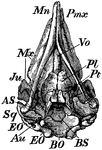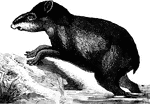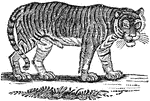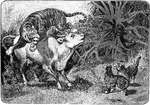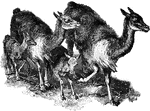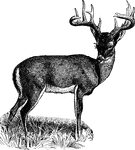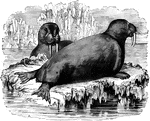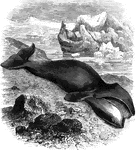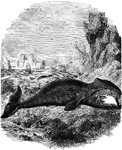The Mammals: T-Z ClipArt gallery contains 108 illustrations of mammals starting with the letters "T," "U," "V," "W," "X," "Y," and "Z" including: tapir, tatou, terrier, tiger, vicuna, walrus, weasel, whale, wolf, wolverine, wombat, woodchuck, yak, zebra, zebu, zemni, and zorilla.
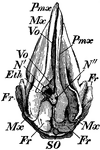
Physeter macrocephalus Skull
A sperm-whale (Physeter macrocephalus) or cachalot (French). A, top view of a fetal sperm-whale skull.
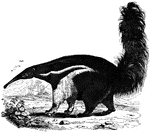
Tamanior
Inhabits most part of South America. About four feet in length. Spends the greater parts of its life…

Tapir
Tapirs are found in South America. They have four toes in front and three behind. The snout is prolonged.
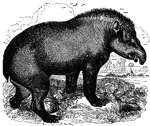
Tapir
"It is a large animal, measuring six feet in length, and is of a uniform brown color. It inhabits the…

Malayan Tapir
This illustration shows the largest of the four species of tapir and the only one native to Asia. The…
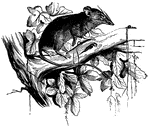
Rostrated Tarsipede
"A small, pretty, mouse-like animal, about three inches long, having a rostrated or beak-shaped snout,…

Tasmanian Devil
The Tasmanian Devil (Sarcophilus harrisii) is a carnivorous marsupial native to Tasmania, Australia.
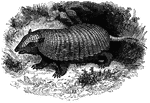
Giant Tatou
"In this carapace covers the body above and low down on the sides, but leaves the belly unprotected;…
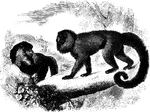
Collared Tee-Tee
"Genus Callithrix. The monkeys of this genus are called Sajous by some author. They…
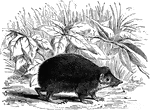
Tendrac
"About five inches long, and covered with spines resembling bristles. It is called Tendrac by the natives…

Tenrec
"Tenrec is a genus of Insectivora, represented by one species, which is restricted to Madagascar, Bourbon,…
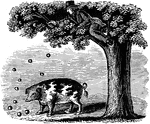
The Hog Never Looks Higher than His Head
"More than to eat, the hog does not aspire; / To get and cram his food, he looks no higher, / Like men…

Tiger
The tiger found only in Asia, stands three feet high at the shoulders, but can be as long as eight feet.…

Tiger
The tiger found only in Asia, stands three feet high at the shoulders, but can be as long as eight feet.…

Tiger
A powerful carnivorous mammal of the cat family. The adult is about eight feet long and three to four…

Tiger Head
"Felidæ or Felinæ is the cat tribe, a family of carnivorous quadrupeds, including the domestic…
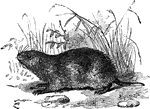
Tucutucu
Usually 8 to 10 inches long with a tail 2 to 3 inches in length, small eyes, rudimentary ears and a…
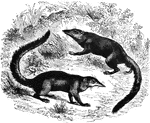
Tupaias
"These are small animals, having somewhat the form and agility of squirrels. The head is long, the snout…
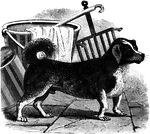
Turnspit
A unique breed of greyhound. Humble but intelligent, the turnspit, which, despite its vulgarity, appears…
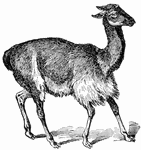
Vicuna
The vicuna is the smallest member of the camel family. It lives in elevated locations in South America.
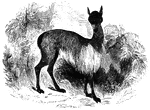
Vicuna
"Its color is reddish yellow on the back and whitish on the belly. It is a wild species, which is principally…
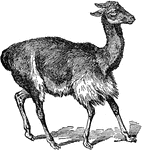
Vicuna
"Vicuna is a native of the most elevated localities of Bolivia and northern Chile. It is very wild,…
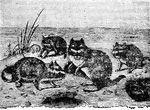
Viscacha
"Viscacha is a stout-built rodent, resembling a marmot, from 18 inches to two feet long, exclusive of…

Northern Red-Backed Vole
The Northern Red-Backed Vole (Myodes rutilus) is a small mammal in the Cricetidae family of rodents.

Walrus
This sea mammal is known for the great length of the canine teeth of the upper jaw, sometimes reaching…
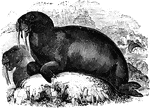
Walrus
"In the adut lower jaw there are neither incisors nor canines, and the lower jaw itself is compressed…

Walrus
"The walrus, also called the morse, seahorse, and sea cow, is now confined to the regions within the…

Walrus
An animal resembling the large seals, but it has dental affinities with the ungulates. Its skull is…
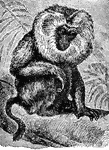
Wanderoo
"The Wanderoo, or Wanderu, is the Macacus silenus, from the S. of Hindustan, especially the country…
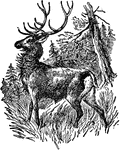
Wapiti
"Wapiti is the name given by the North American Indians to an animal, a native of North America, ranging…

Weasel
Weasels are small, carnivorous mammals. They are effective in exterminating rats and mice from farms,…

Weasel
An animal of the genus Mustela, having a long slender body, short legs, long slender tail, and light…

Weasel
A group of quadruped mammals of the northern hemisphere, which includes a number of widely diffused…
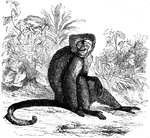
Weeper
"Genus Sajou. These creatures are somewhat smaller, but less slender that the ateles: the tail…

Whale
"Whale is a name that may be taken as equivalent to Cetacean, and applied to any member of that order…

Whale
The common name of animals belonging to the order cetacea, with which are included the porpoise and…

Rorqual Whale Side
The name given to certain whales closely allied to the common or whalebone whales, but distinguished…

Beluga Whale
"When young it is black, when mature white, sometimes having a yellowish or rosy tinge. It is twelve…

